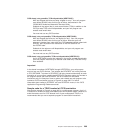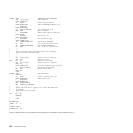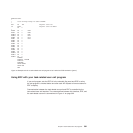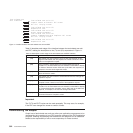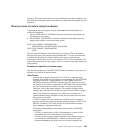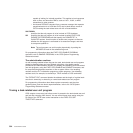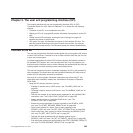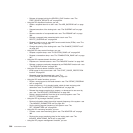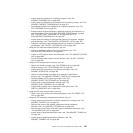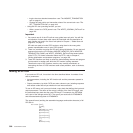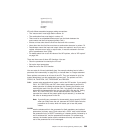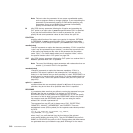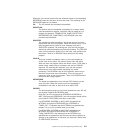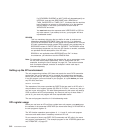– Inquire about the attributes of a specified program—see “The
INQUIRE_PROGRAM call” on page 366
– Inquire about the attributes of the program that is currently running—see “The
INQUIRE_CURRENT_PROGRAM call” on page 373
– Set selected attributes in the definition of a specified program—see “The
SET_PROGRAM call” on page 375
– Browse through program definitions, optionally starting at the definition of a
specified program—see “The START_BROWSE_PROGRAM call” on page
379, “The GET_NEXT_PROGRAM call” on page 380, and “The
END_BROWSE_PROGRAM call” on page 381
– Inquire about the settings of the autoinstall function for programs, mapsets,
and partitionsets—see “The INQUIRE_AUTOINSTALL call” on page 382
– Change the settings of the autoinstall function for programs, mapsets, and
partitionsets—see “The SET_AUTOINSTALL call” on page 382.
v Using the XPI state data access functions, you can:
– Inquire on application system data in the AP domain—see “The
INQ_APPLICATION_DATA call” on page 384
– Inquire on CICS system data in the AP domain—see “The INQUIRE_SYSTEM
call” on page 386
– Set CICS system data values in the AP domain—see “The SET_SYSTEM
call” on page 391.
v Using the XPI storage control functions, you can:
– Obtain and initialize storage—see “The GETMAIN call” on page 392
– Release storage—see “The FREEMAIN call” on page 395
– Inquire about the access-key of an element of storage—see “The
INQUIRE_ACCESS call” on page 395
– Obtain the start address and length of an element of task-lifetime
storage—see “The INQUIRE_ELEMENT_LENGTH call” on page 396
– Discover whether CICS is short on storage—see “The
INQUIRE_SHORT_ON_STORAGE call” on page 397
– Inquire about a task’s task-lifetime storage—see “The
INQUIRE_TASK_STORAGE call” on page 398
– Cause CICS to switch from a subspace to base space—see “The
SWITCH_SUBSPACE call” on page 399.
v Using the XPI trace control function, you can:
– Write a trace entry to the active trace destinations—see “The TRACE_PUT
call” on page 400.
v Using the XPI transaction management functions, you can:
– Inquire about the environment in which a transaction is running—see “The
INQUIRE_CONTEXT call” on page 401
– Discover the name of the dynamic transaction routing transaction
definition—see “The INQUIRE_DTRTRAN call” on page 403
– Discover the current value of the MXT system initialization parameter—see
“The INQUIRE_MXT call” on page 403
– Inquire about a specified transaction class—see “The INQUIRE_TCLASS call”
on page 405
– Inquire about a specified transaction definition—see “The
INQUIRE_TRANDEF call” on page 406
Chapter 3. The user exit programming interface (XPI) 307



